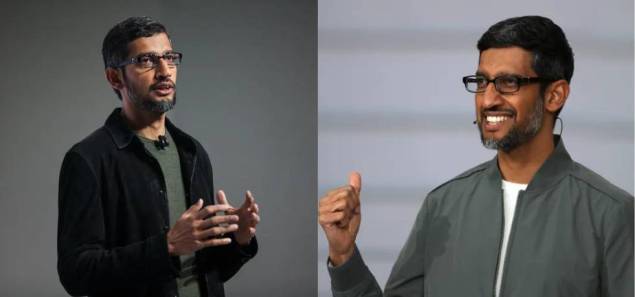Alphabet CEO Sundar Pichai spoke at a Stanford event on Wednesday put on by the school’s business school. He shared some small thoughts on how he runs one of the most valuable tech companies in the world.
While Pichai has been having a rough go lately, this was a big event for him. Most people think that Google got behind on generative AI and is now behind OpenAI, which was supported by Microsoft. That’s true even though Pichai has been leading the company’s focus on AI for most of the last ten years and Google researchers wrote the groundbreaking paper on transformer models that started the generative AI revolution. Recently, Alphabet’s Gemini LLM was criticised for making strangely incorrect pictures of historical events. For example, it showed America’s founding fathers as Black or Native American instead of white English men, which could mean that it overcorrected for some kinds of bias.
Dean Jonathan Levin of the Stanford Graduate School of Business wasn’t exactly a hostile interrogator; at the end, he mentioned that the two men’s sons had played in a middle school band together. Levin wasn’t even rude, and Pichai is good at answering tough questions by framing them as more questions about how he thinks, rather than giving direct answers. But there were a few interesting things in the talk.
Levin once asked Pichai what he did to keep a company of 200,000 people coming up with new ideas while startups were trying to mess with its business. It’s clear that Pichai is worried about it.
He began, “To be honest, it’s a question that has kept me up at night for years.” “One of the great things about technology is that you can always make something amazing with a small group of outsiders.” That’s what history has shown. It’s not always true that bigger is better. Regulators may not agree, but as the CEO of the company, I’ve always thought that someone in a garage could always have a better idea. So I’m wondering how your company moves quickly. How do you make people willing to take risks? Why would someone do that? You have to really put in a lot of work to do all of these things. I believe that bigger companies are more likely to fail. One of the strangest things I’ve seen is that people become less willing to take risks as things get better. It doesn’t make sense at all. A lot of the time, smaller businesses make choices that are riskier for the business. But when you’re bigger, like at a big university or a big company, you feel like you have a lot more to lose. And because of this, you don’t take as many big, risky projects. That means you have to choose to do it. Teams need to be pushed to do that.
He didn’t give any specific strategies that have worked at Google. Instead, he talked about how hard it is to come up with the right rewards.
“One thing this makes me think about a lot is how to reward hard work, taking risks, and good execution, not just results.” It’s simple to believe that results should be rewarded. But then people play games with it, right? A lot of people do conservative things that will work out well.
He talked about how Google used to be more daring and willing to try new things. He specifically mentioned the company’s failed project called Google Glass. It was one of the first devices to try out augmented reality.
“Recently, we said that we went back to an idea we had about Google Labs when we were little.” So, we’re making it easier to release something without having to worry about the full brand and the weight of making a Google product. How can you make something simple and light? How can you make it easier for people inside the company to make prototypes and get them to other people?”
Levin then asked Pichai what new developments he was most excited about this year.
First, he talked about how Google’s newest LLM is multimodal, which means it can handle multiple types of data at the same time, like video and text.
We are already using Gemini 1.5 Pro on all of our AI models. It has a 1 million context window and works across multiple modes. Being able to take in and handle huge amounts of information in any format and send it out in a different format is mind-blowing in a way that we haven’t fully thought about it yet.
Secondly, he talked about how different separate results can be linked together to make workflows smarter. “LLMs are currently only used for finding information. But connecting them in a way that lets you handle workflows will be very powerful.” He made a joke that it might make the way you bill at Stanford Hospital a little easier.
You can watch the whole interview on YouTube, along with an interview that came before it with Fed Chairman Jerome Powell. Around 1 hour and 18 minutes in, Levin and Pichai start talking.
What do you say about this story? Visit Parhlo World For more.


